Ferruccio Lamborghini took a pretty dim view of motorsport, so they say.
Probably watching how much money Ferrari, Maserati, Lancia and Alfa Romeo poured into proving their mettle on the track – and being a man accustomed to ploughing his own furrow – he preferred to let his cars do their talking on the road.
Some talking they did: stories of the man himself racing Ferrari development drivers down the Bolognese autostrada in his modified, twin-cam 250 GT – and winning – are thestuff of legend.
But that, of course, was then, and for a company such as Lamborghini to be bound today by its founder’s philosophical peculiarities would be pretty costly. Selling customer racing machines has become a nice little earner for most of Sant’Agata’s competitors. From Aston Martin to Mercedes-AMG and McLaren, there are plenty of supercar makers queuing up to relieve wealthy ‘gentleman racers’ of six-figure sums for a season on an international FIA GT sports car grid. And, well… if you don’t join ’em, you can’t beat ’em.
So Lamborghini marked its 50th anniversary two years ago by launching its own works racing department: Squadra Corse. Before that, there had been toe-dipping exercises with racing versions of the Diablo and Murciélago. Subsequently, there have been Cup versions of the Gallardo for several one-make Super Trofeo series around the world – and there’s another one this year in the shape of the Huracán Super Trofeo.
But only now is Squadra Corse spreading its wings and really doing what it was intended for: designing, engineering and entering a ‘works’ Lamborghini racer in an international FIA GT championship for the first time.
The Huracán GT3 is a landmark for the Raging Bull. And when you’re asked to come and test a landmark Lamborghini racing car at a circuit like Adria in northern Italy, you politely accept – before putting the handset of your desk phone gently back on its cradle, pinching yourself and triple-checking that the date’s not 1 April.
Under the skin
The GT3 uses the same aluminium-carbonfibre hybrid chassis as the Huracán road car, as well as a slightly differently dressed version of the road car’s 5.2-litre V10 engine, with better cooling, motorsport-proven ancillaries and a Bosch ECU.
The engine’s output is limited to about 500bhp by a competition air restrictor, which effectively varies how much power it’ll make depending on the ‘balance of performance’ penalty the race directors deem appropriate.

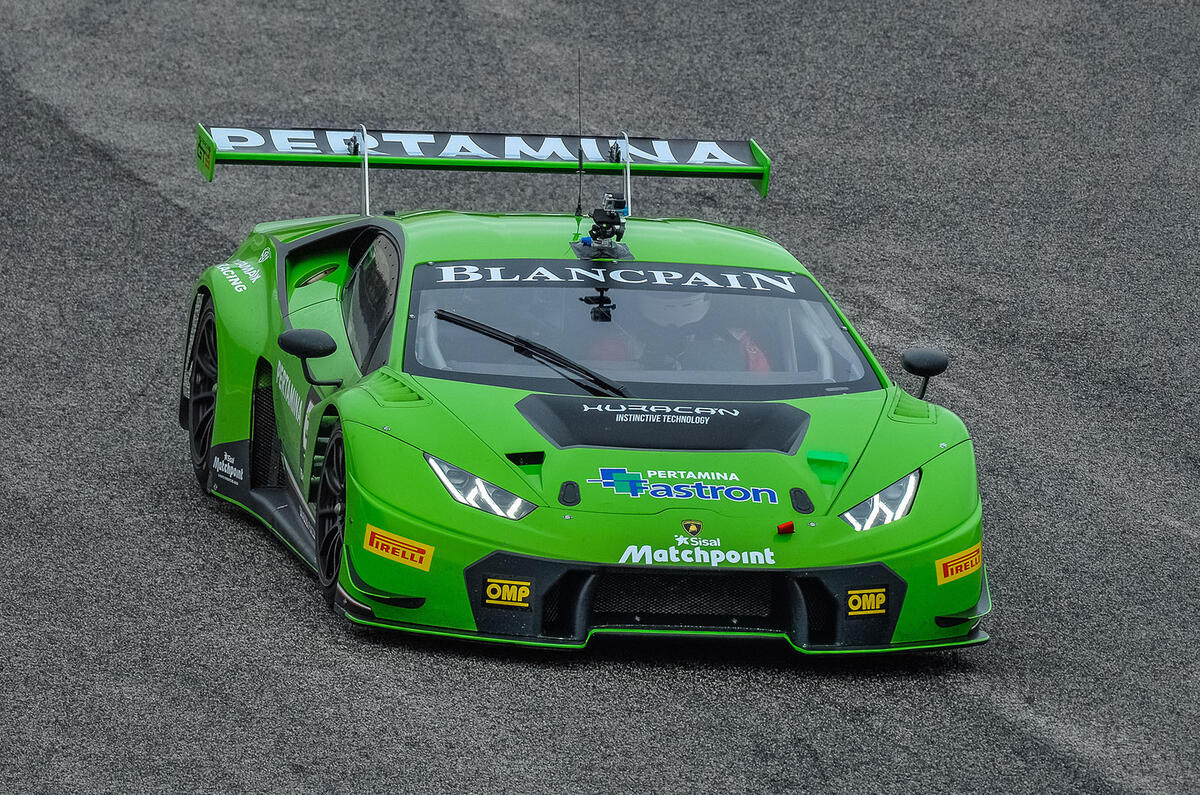

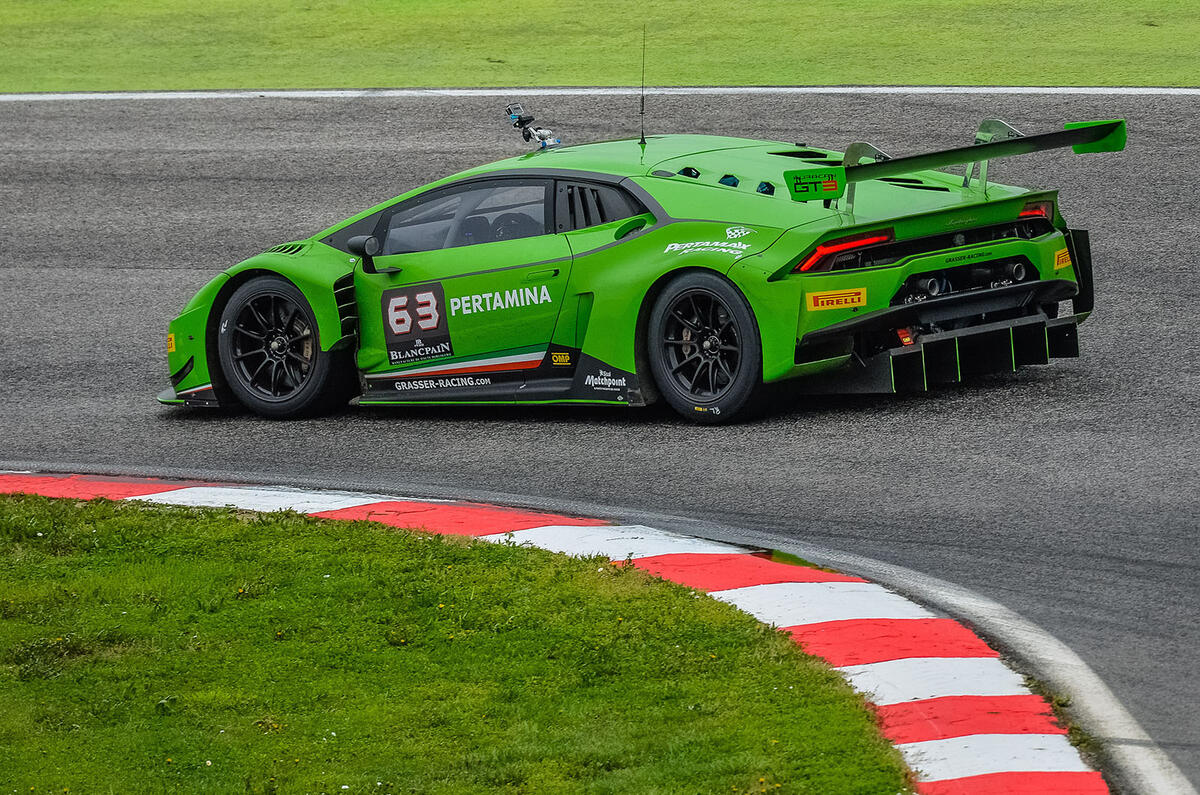
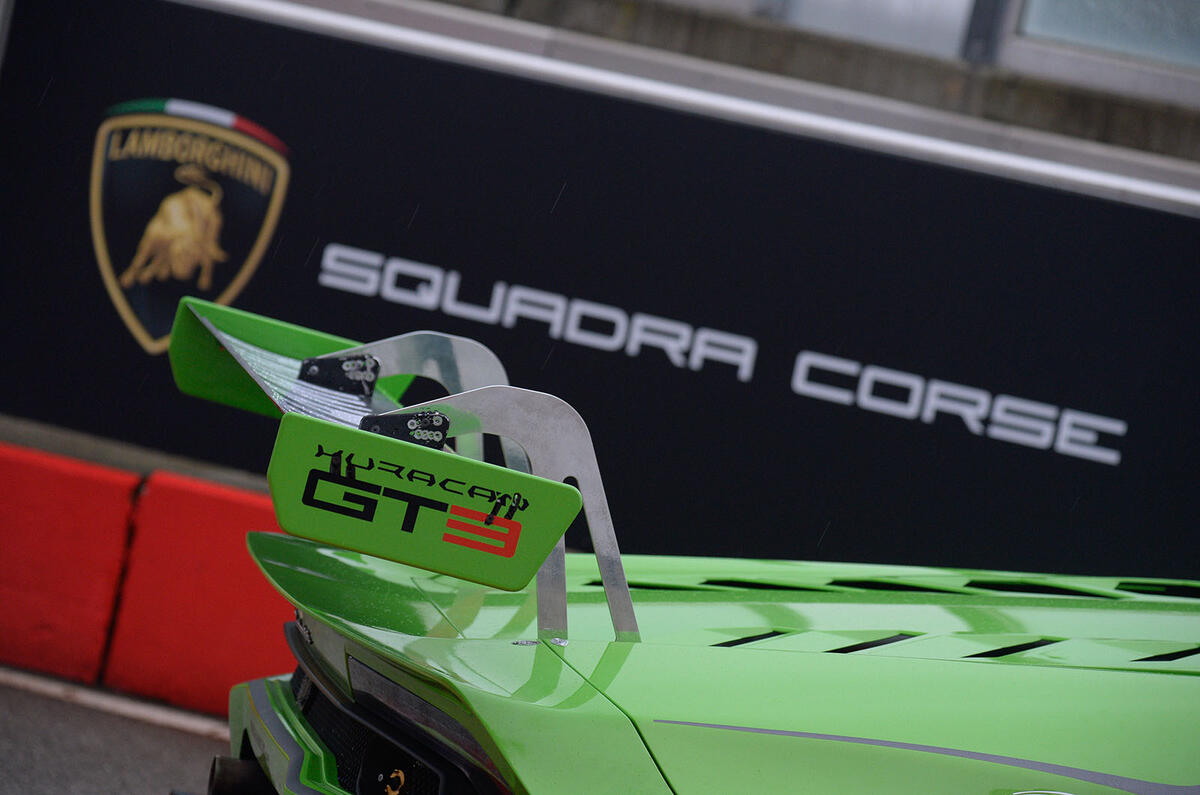

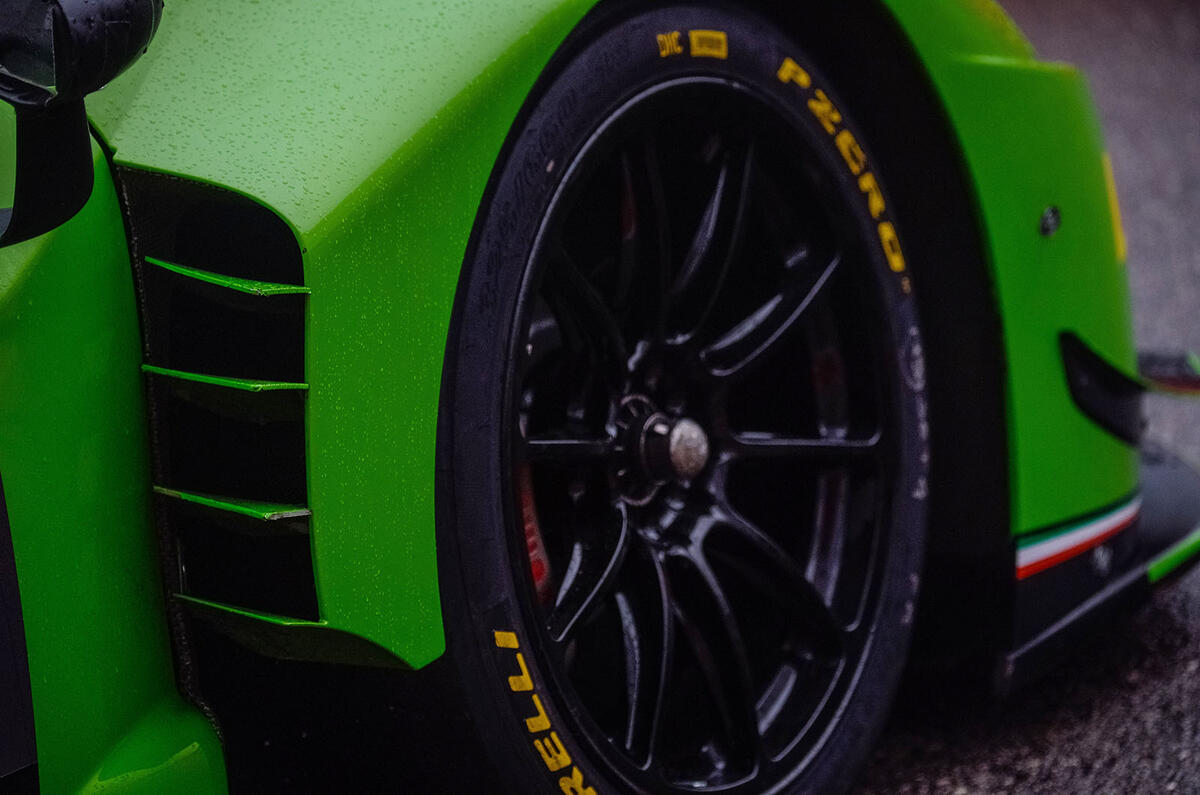


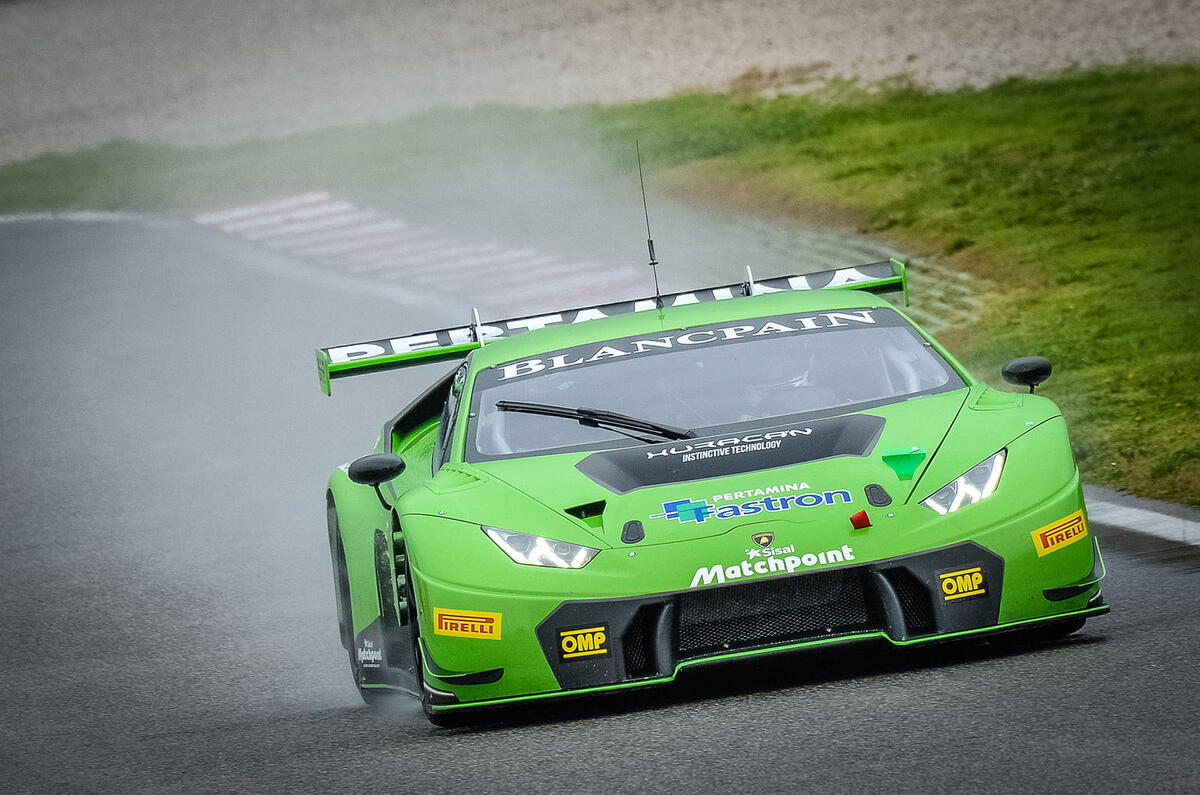



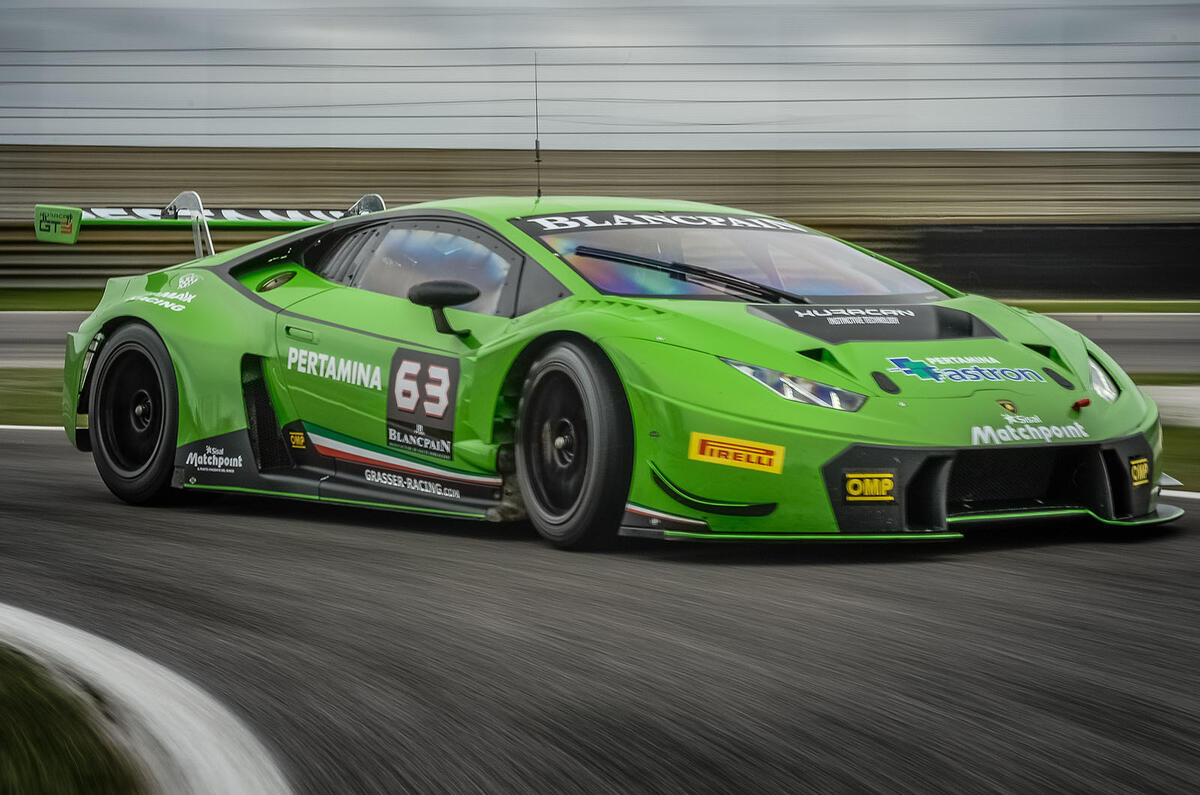


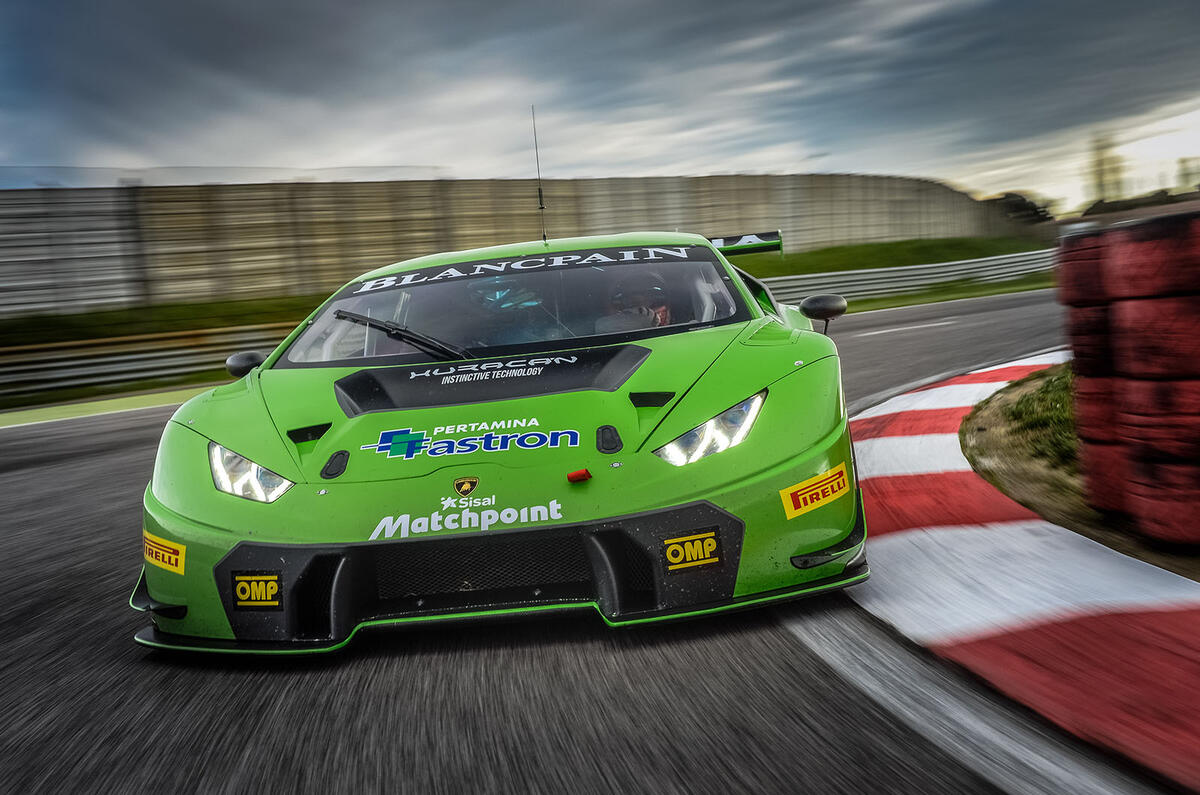
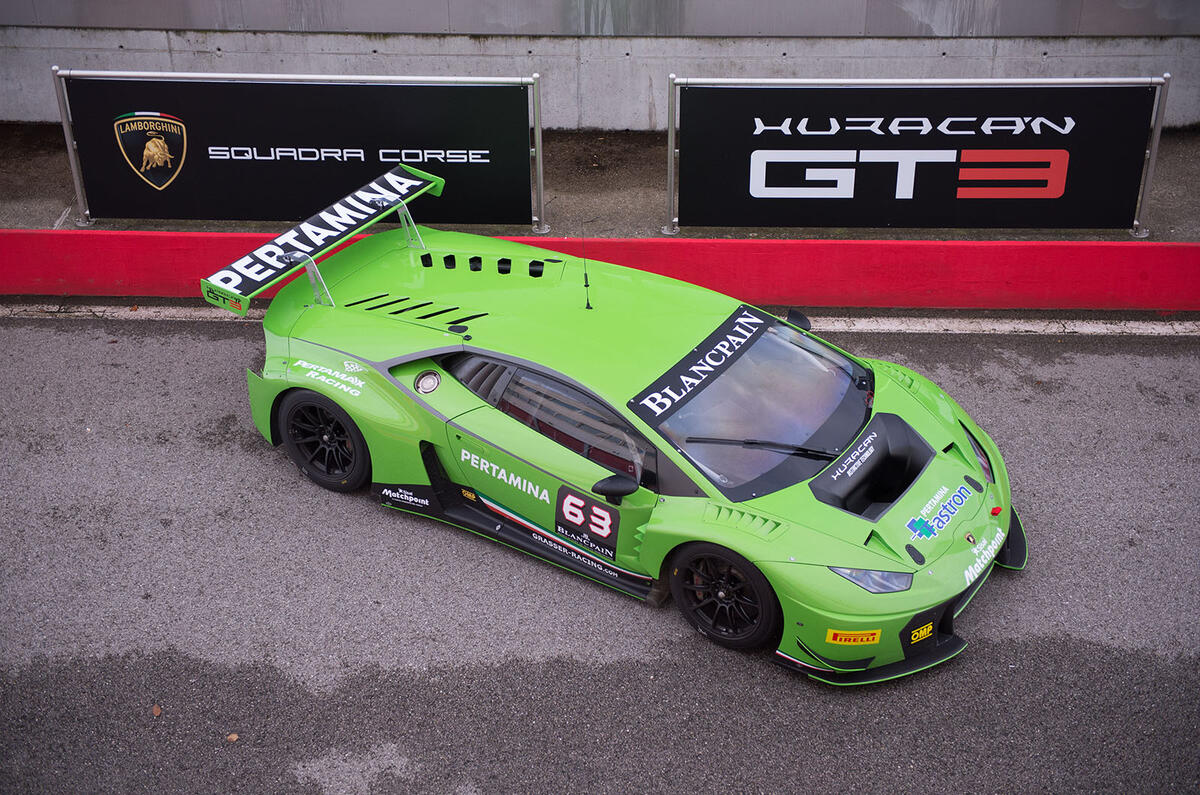
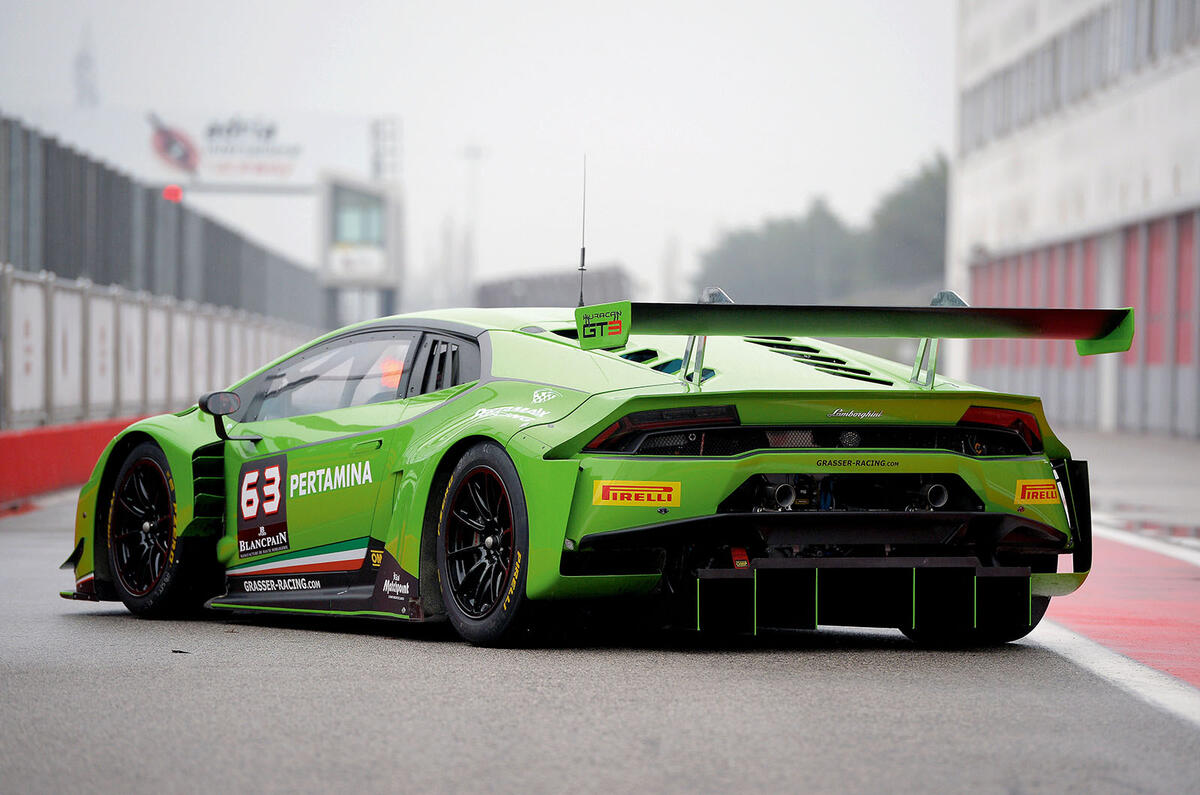































Add your comment